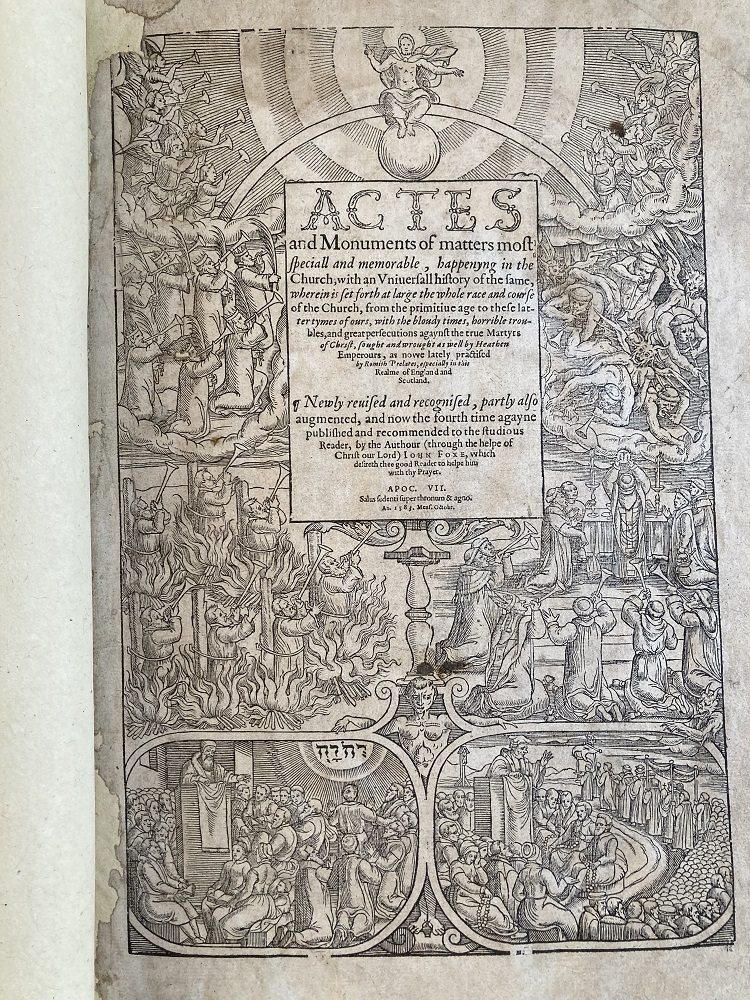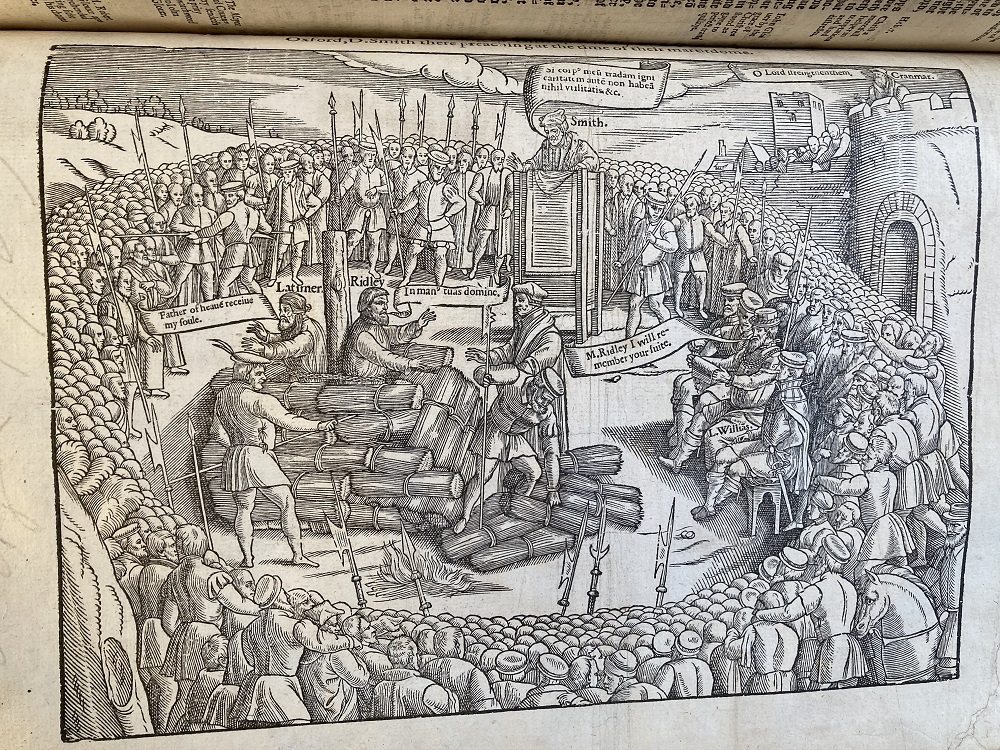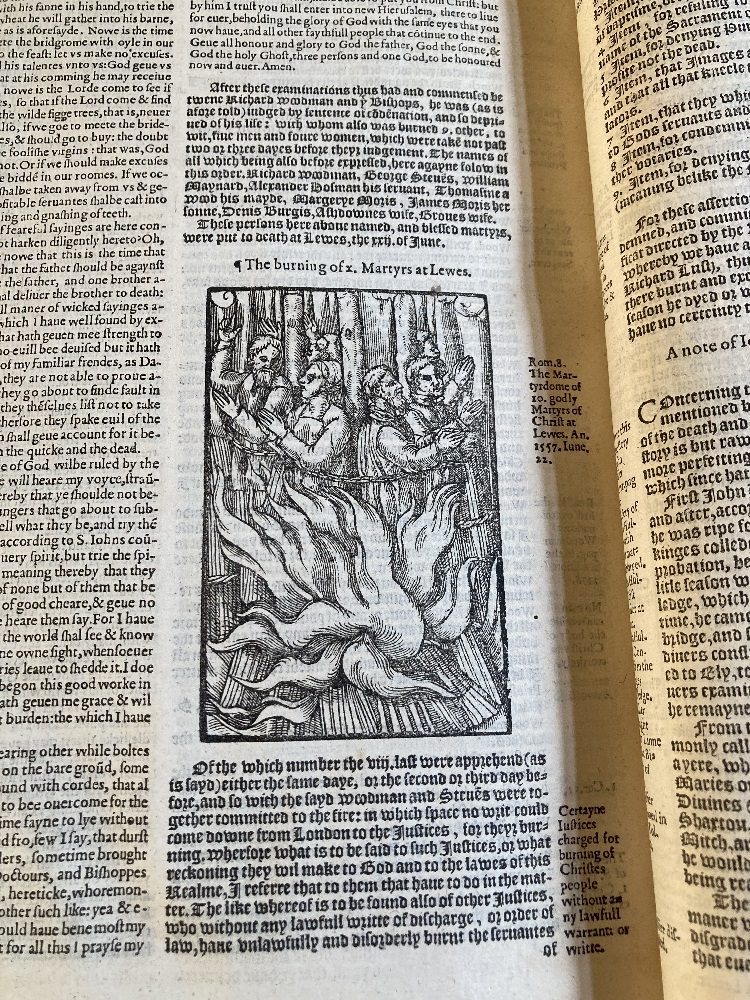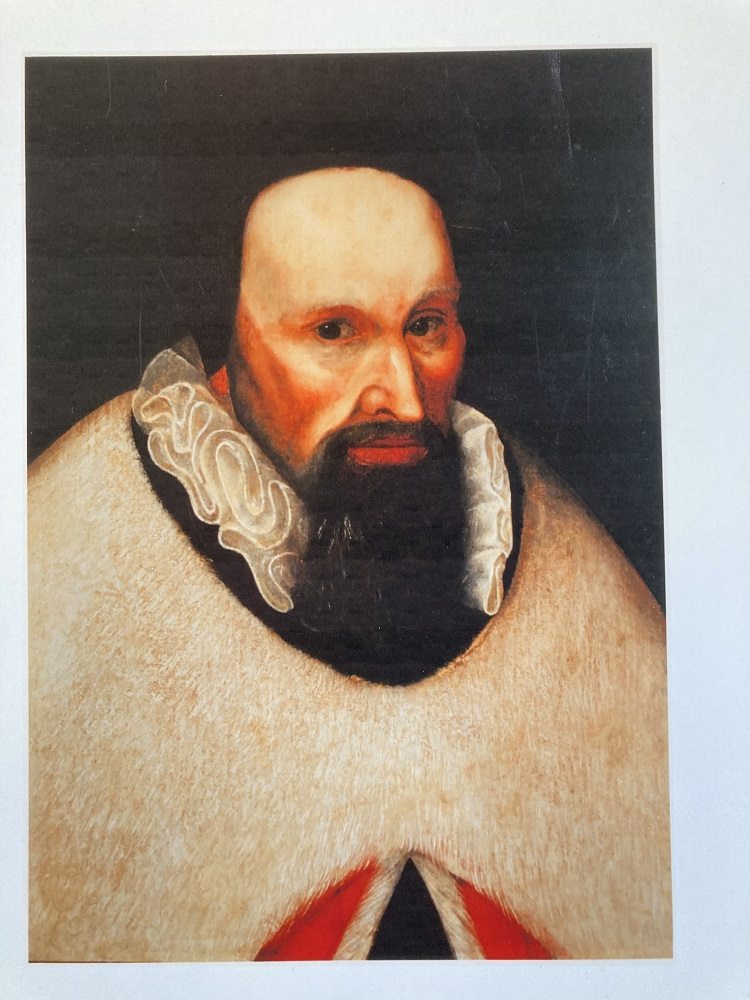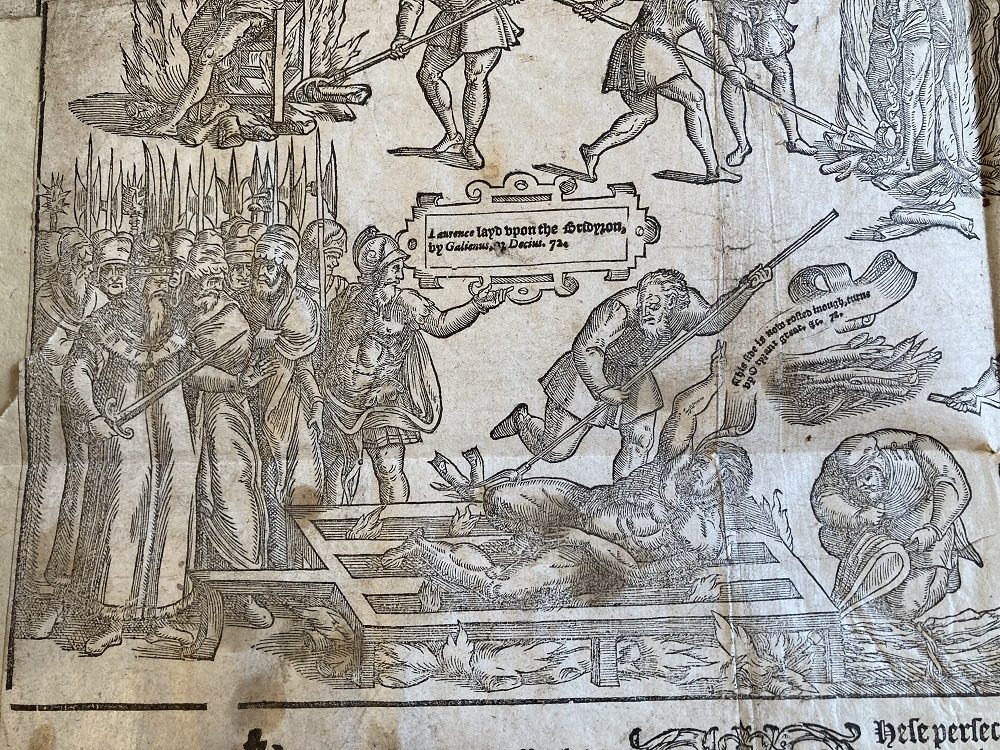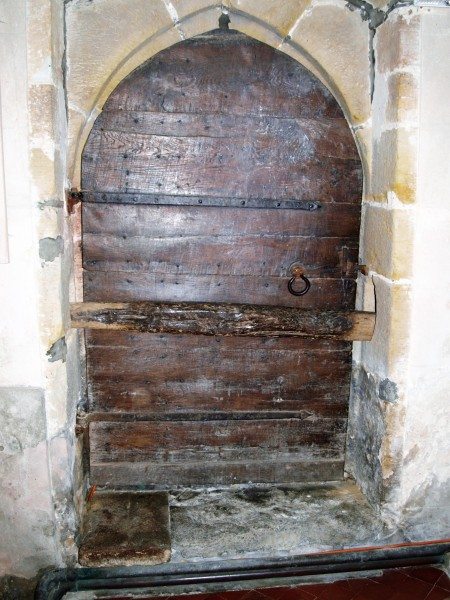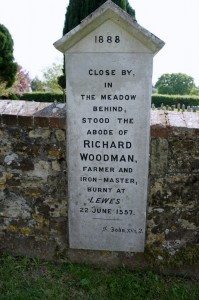'Turn me over, I'm done on this side'
Actes and monuments of matters most speciall and memorable, happenyng in the Church : with an vniuersall history of the same, wherein is set forth at large the whole race and course of the Church, from the primitiue age to these latter tymes of ours, with the bloudy times, horrible troubles, and great persecutions agaynst the true martyrs of Christ … / newly reuised and recognised, partly also augmented, and now the fourth time agayne published and recommended to the studious reader, by the authour (through the helpe of Christ our Lord) Iohn Foxe, which desireth thee good reader to helpe him with thy prayer.
At London : Imprinted by Iohn Daye …, an. 1583 mens. Octobr
Lower Library: F.37.25
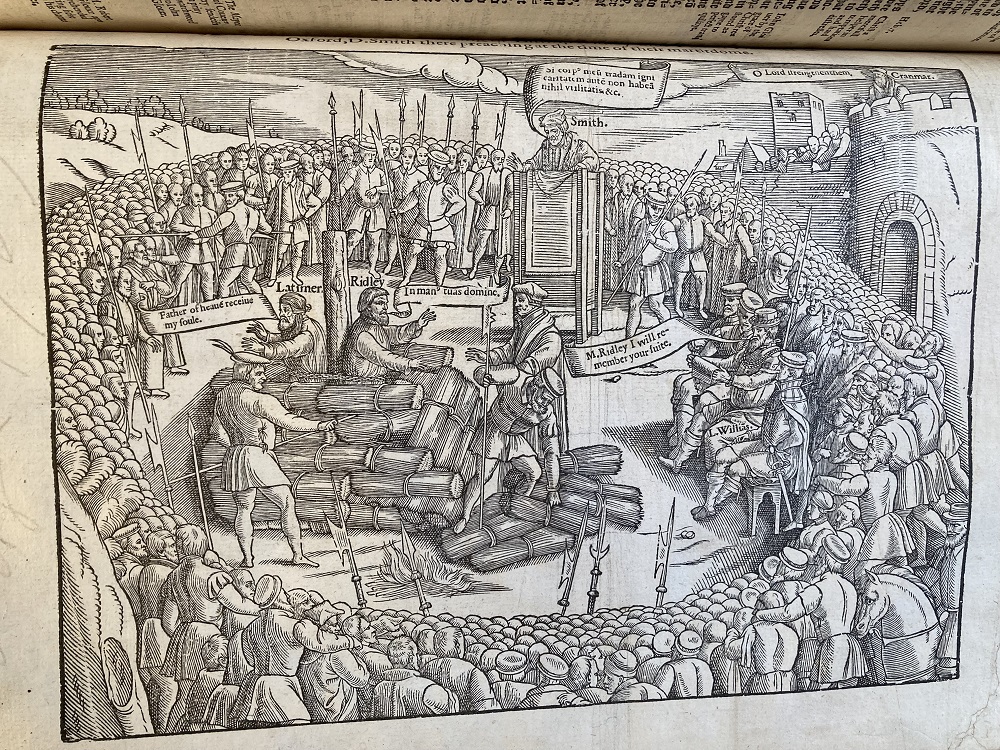
The execution of Bishops Ridley and Latimer, which Cranmer (top right) was compelled to watch.
Foxe’s ‘Book of Martyrs’, by the time of this fourth edition four times greater in length than the Holy Bible, has been hailed as the most technically challenging book to have been brought to the press during the first centuries of printing. John Foxe (1516–1587), from Boston, Lincolnshire, was admitted at the age of 16 to our sister college of Brasenose and later ordained a deacon of the Church of England; renowned for harbouring devout Protestant views he had already embarked on a comprehensive history of the sufferings of Christian martyrs throughout the ages when the accession of Queen Mary (1553) compelled him to flee to France. He published first an account of the persecution of Lollards and then, in 1559, following the death of Mary and using manuscript source material smuggled out of England, the first version of his martyrology. It was published in Latin.
A more expansive English version appeared in 1563 under the title Actes and monuments of these latter and perilous dayes; it was at this time that the martyrology acquired its popular title. Foxe was able to draw extensively on the eye-witness accounts of the Marian persecutions to which he now had access, vividly illustrated in woodcuts. Subsequent editions included corrections to satisfy his numerous critics and the fourth (1583) edition was the last printed in its author’s lifetime. Our copy was formerly in the possession of the Protestant theologian William Branthwaite, contributing translator to the Apocrypha of the King James Bible (1611) and Master of the College from 1607 until shortly before his death in 1619; his library, comprising more than five hundred volumes, was bequeathed to us later that year.
Foxe abhorred cruelty and campaigned against the execution of those chained to the stake to be consumed by fire. The Branthwaite bequest must have overwhelmed the capacity of the College’s small, chained, library in its purpose built accommodation from 1441 in what is now the Panelled Room. Branthwaite’s books were never affixed to the shelves and, by 1660, the practice of chaining books was discontinued.
A fold-out leaf of plates illustrates in lurid detail the methods of torture of the earliest martyrs. Bottom left is St. Laurence being roasted on the grid-iron for his refusal to surrender the treasure of the Christian Church to the Roman authorities. His feast-day is 10th August and he is the patron saint of librarians. His epithet is well-known. Foxe provided unstinting detail in his accounts of more contemporary persecutions. On page 2003 we see the execution of Richard Woodman, of Warbleton, Sussex, a Wealden ironmaster. He had executed the wrought-iron scroll-work on the door of his local church; like St. Laurence he refused to yield.

